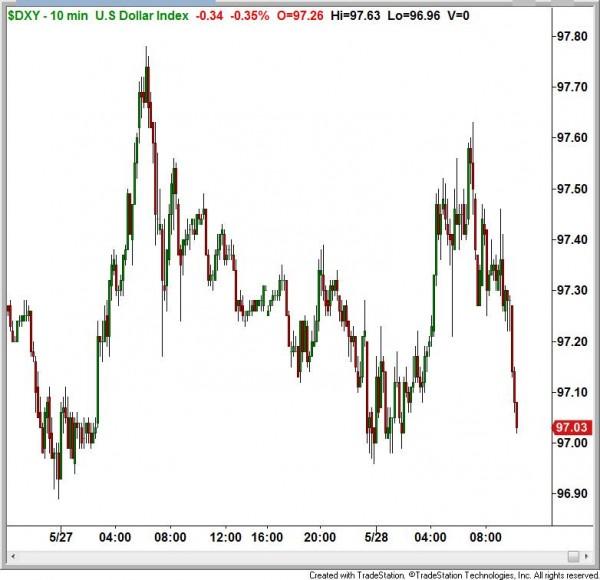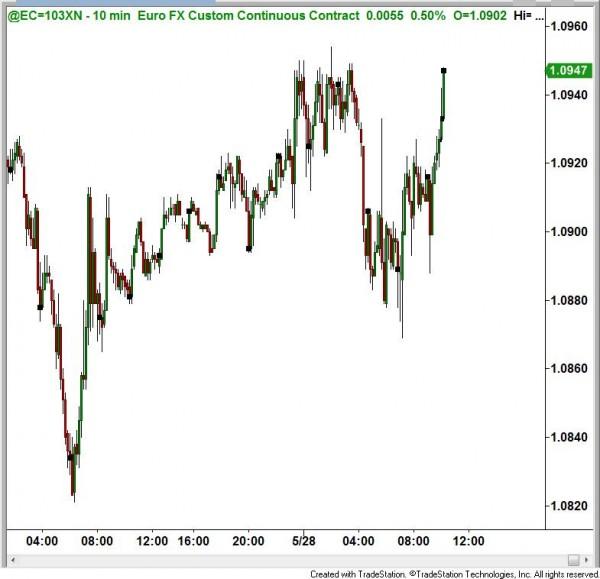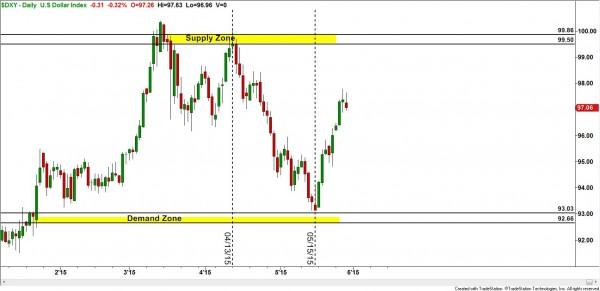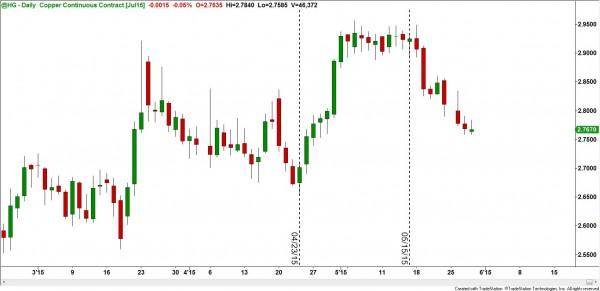By far, the biggest market on a global scale is the currency market. It trades over Five billion dollars in notional value daily, making it also one of the most liquid markets in the world. In this week’s article I will delve into what drives price movement in the Currency futures as well as many of the commodities markets.
First, the futures currency market differs from the “spot market” currencies in a few ways. Simply, in the futures market we trade all of what are commonly referred to as the “majors,” or put another way, they are the currencies of the top Industrialized nations of the world. These are quoted against the US Dollar which is different than the spot market because in that market, each world currency can be “paired” against another. This results in a vast number of combinations that can be traded. Not so in Futures, which makes the analysis much more streamlined. The “Majors” as they are deemed by currency traders include the Euro, British Pound, Japanese Yen, Swiss Franc, and both the Canadian, and Australian Dollar. You can also trade the New Zealand Dollar, the Mexican Peso, and other emerging market currency in the futures market, but these contracts are not liquid so they would not be advisable to trade.
The fact that Currency futures are all pegged against the US Dollar makes it imperative that anyone trading these has a solid understanding of the supply and demand imbalances that occur in the US dollar index ($DXY). The Dollar Index is a basket of currencies that are measured against the US dollar. The Biggest component is the Euro currency which represents close to 60% of the value of the index.
As a result of the Euro being such a big piece of the Dollar index pie the inverse correlation between the two is very strong. We can see this clearly demonstrated in the two charts below.
A key probability enhancer is to find areas where the $DXY will turn up after it has been declining or turn down after a rally. Finding these areas beforehand would give a trader an edge as to whether to aggressively be pursuing long or short entries in the Currency futures.
In addition, the strength or weakness of the US Dollar also has ramifications in the commodities markets. As I mentioned before, the key is to find the turning points in the Dollar index to give us a leading indication of where the commodities are likely to go. In the two charts below we can see how having a better understanding of these concepts can help a trader change her results.
The first chart shows the supply and demand zones of the US Dollar Index with vertical lines on the dates where price turned. In the second chart we plot the daily price of the Copper futures contract. As we can see, the date where the Dollar index turned down coincides with finding a bottom and then starting a nice rally. A month later as the Dollar Index fell into its demand zone notice that about the same day, Copper peaked and then turned down.
So the bottom line is that if you’re trading Futures currencies and commodities and do not have situational awareness of where supply and demand is in the US Dollar then you don’t have an edge. And speaking of situational awareness, if you’re currently trading without an edge it is tantamount to you flying blind, and who wants to do that? So get a plan, have an edge, and most likely your results will improve.
Until next time, I hope everyone has a great week.
This content is intended to provide educational information only. This information should not be construed as individual or customized legal, tax, financial or investment services. As each individual's situation is unique, a qualified professional should be consulted before making legal, tax, financial and investment decisions. The educational information provided in this article does not comprise any course or a part of any course that may be used as an educational credit for any certification purpose and will not prepare any User to be accredited for any licenses in any industry and will not prepare any User to get a job. Reproduced by permission from OTAcademy.com click here for Terms of Use: https://www.otacademy.com/about/terms
Editors’ Picks
EUR/USD rises toward 1.0800 on USD weakness

EUR/USD trades in positive territory above 1.0750 in the second half of the day on Monday. The US Dollar struggles to find demand as investors reassess the Fed's rate outlook following Friday's disappointing labor market data.
GBP/USD closes in on 1.2600 as risk mood improves

Following Friday's volatile action, GBP/USD pushes higher toward 1.2600 on Monday. Soft April jobs report from the US and the improvement seen in risk mood make it difficult for the US Dollar to gather strength.
Gold gathers bullish momentum, climbs above $2,320

Gold trades decisively higher on the day above $2,320 in the American session. Retreating US Treasury bond yields after weaker-than-expected US employment data and escalating geopolitical tensions help XAU/USD stretch higher.
Addressing the crypto investor dilemma: To invest or not? Premium

Bitcoin price trades around $63,000 with no directional bias. The consolidation has pushed crypto investors into a state of uncertainty. Investors can expect a bullish directional bias above $70,000 and a bearish one below $50,000.
Three fundamentals for the week: Two central bank decisions and one sensitive US Premium

The Reserve Bank of Australia is set to strike a more hawkish tone, reversing its dovish shift. Policymakers at the Bank of England may open the door to a rate cut in June.
RECOMMENDED LESSONS
Making money in forex is easy if you know how the bankers trade!
Discover how to make money in forex is easy if you know how the bankers trade!
5 Forex News Events You Need To Know
In the fast moving world of currency markets, it is extremely important for new traders to know the list of important forex news...
Top 10 Chart Patterns Every Trader Should Know
Chart patterns are one of the most effective trading tools for a trader. They are pure price-action, and form on the basis of underlying buying and...
7 Ways to Avoid Forex Scams
The forex industry is recently seeing more and more scams. Here are 7 ways to avoid losing your money in such scams: Forex scams are becoming frequent. Michael Greenberg reports on luxurious expenses, including a submarine bought from the money taken from forex traders. Here’s another report of a forex fraud. So, how can we avoid falling in such forex scams?
What Are the 10 Fatal Mistakes Traders Make
Trading is exciting. Trading is hard. Trading is extremely hard. Some say that it takes more than 10,000 hours to master. Others believe that trading is the way to quick riches. They might be both wrong. What is important to know that no matter how experienced you are, mistakes will be part of the trading process.




